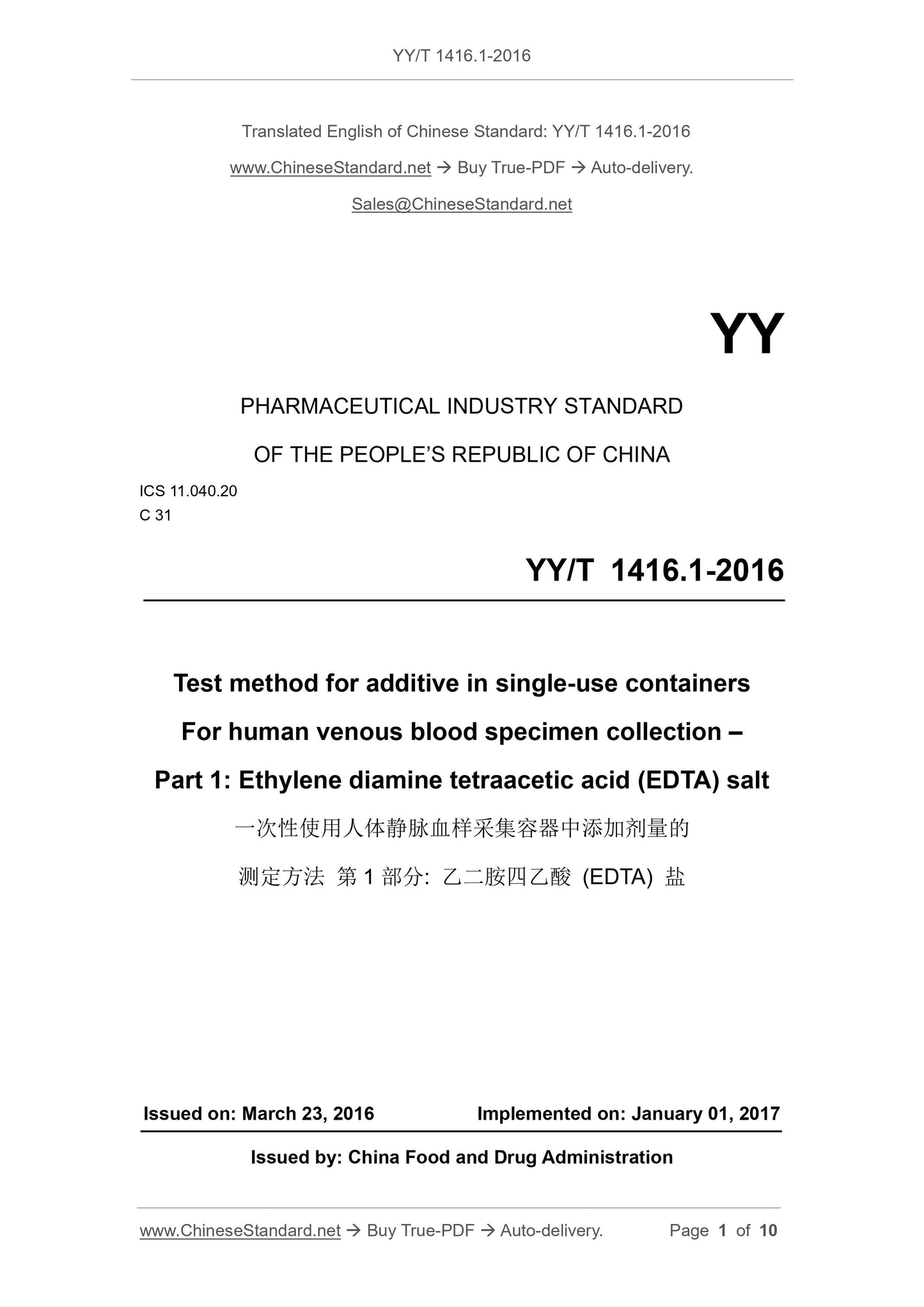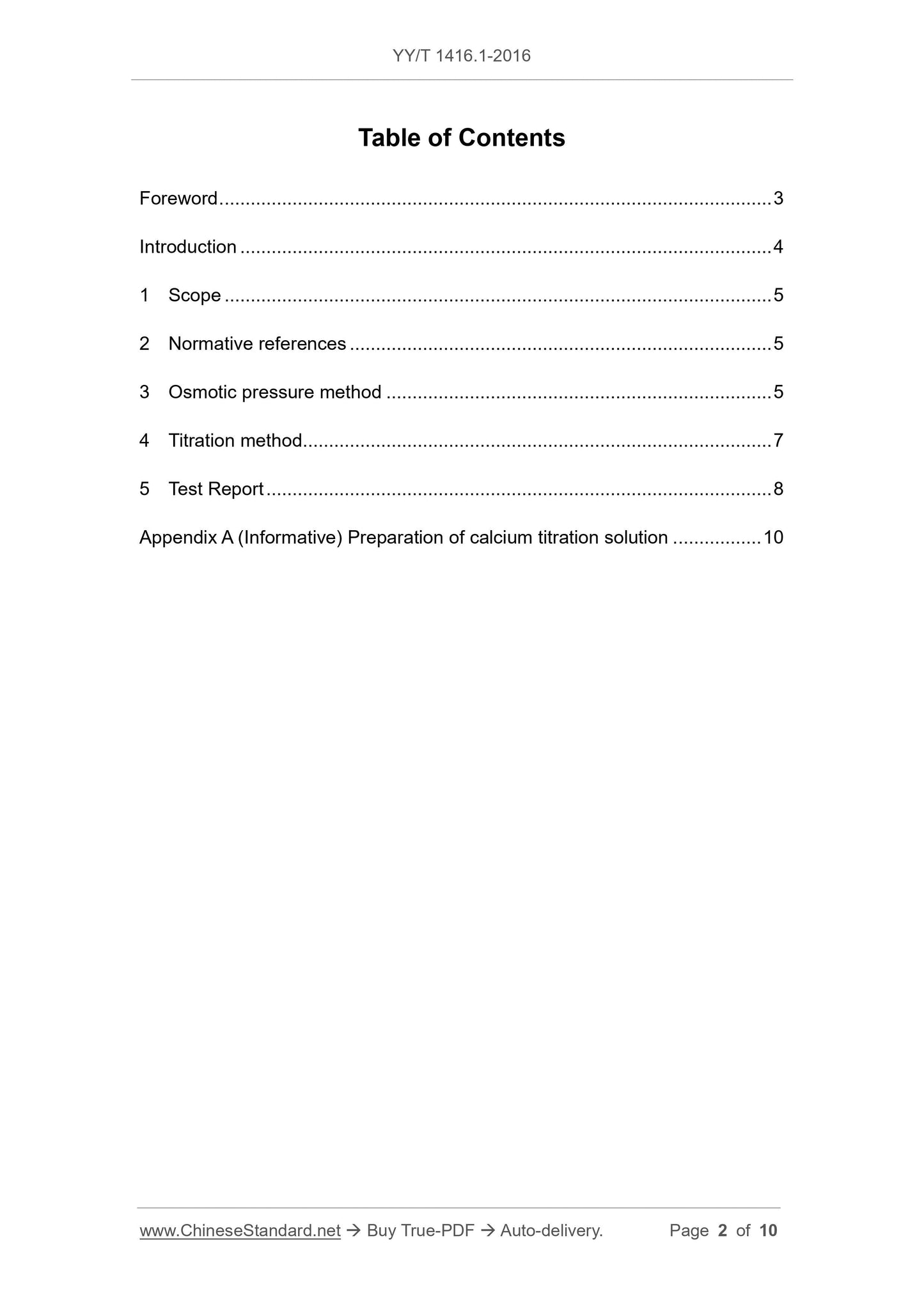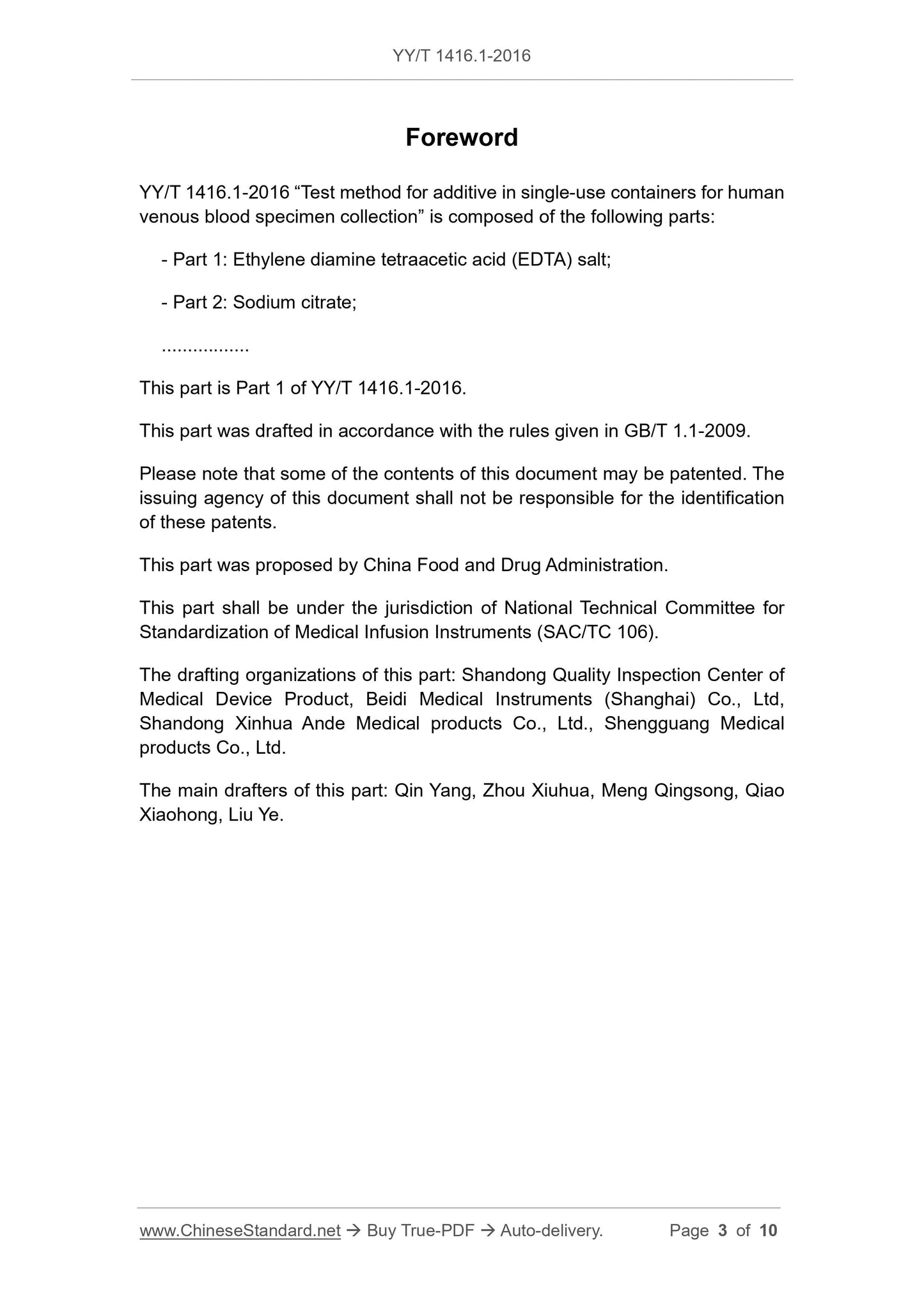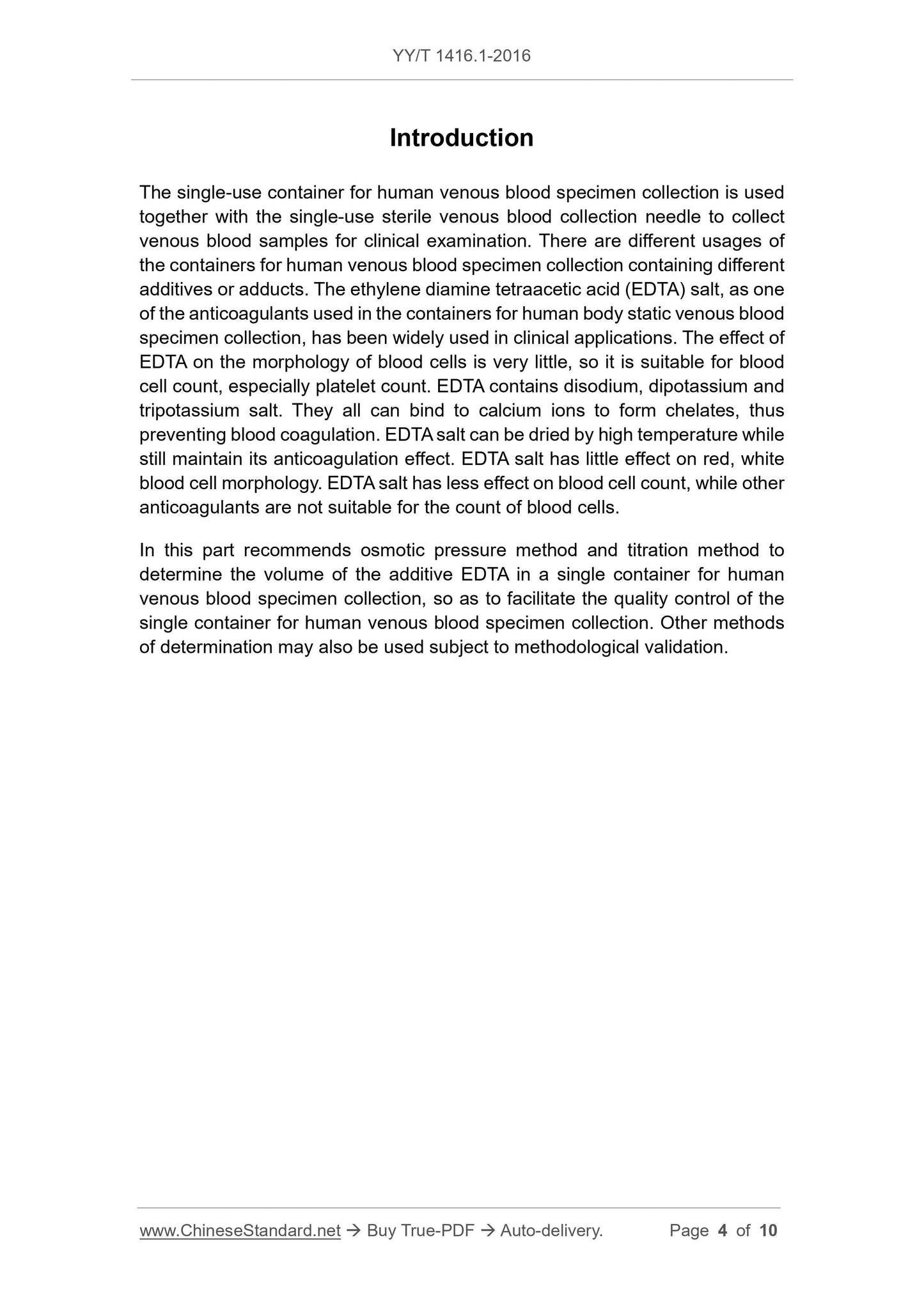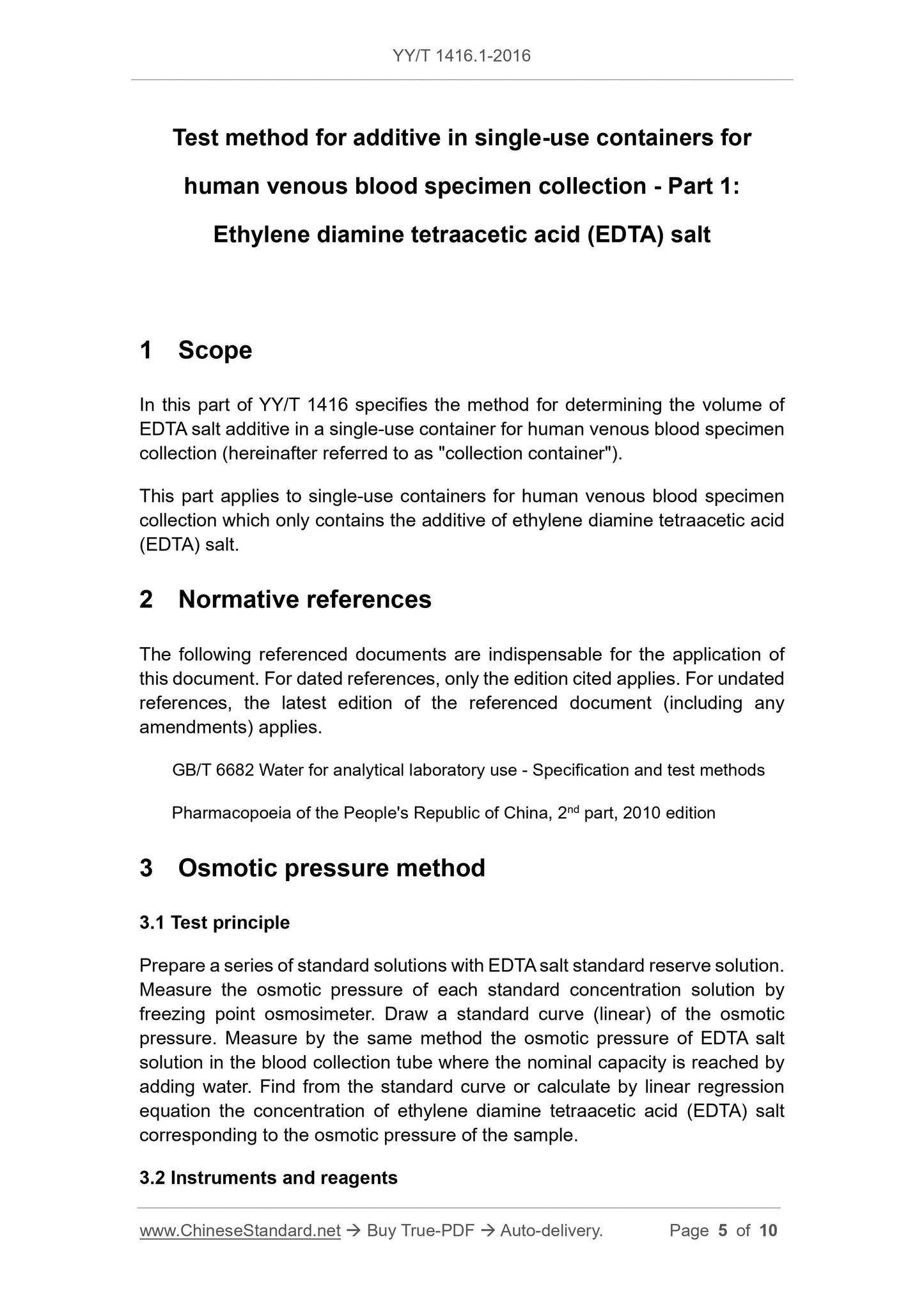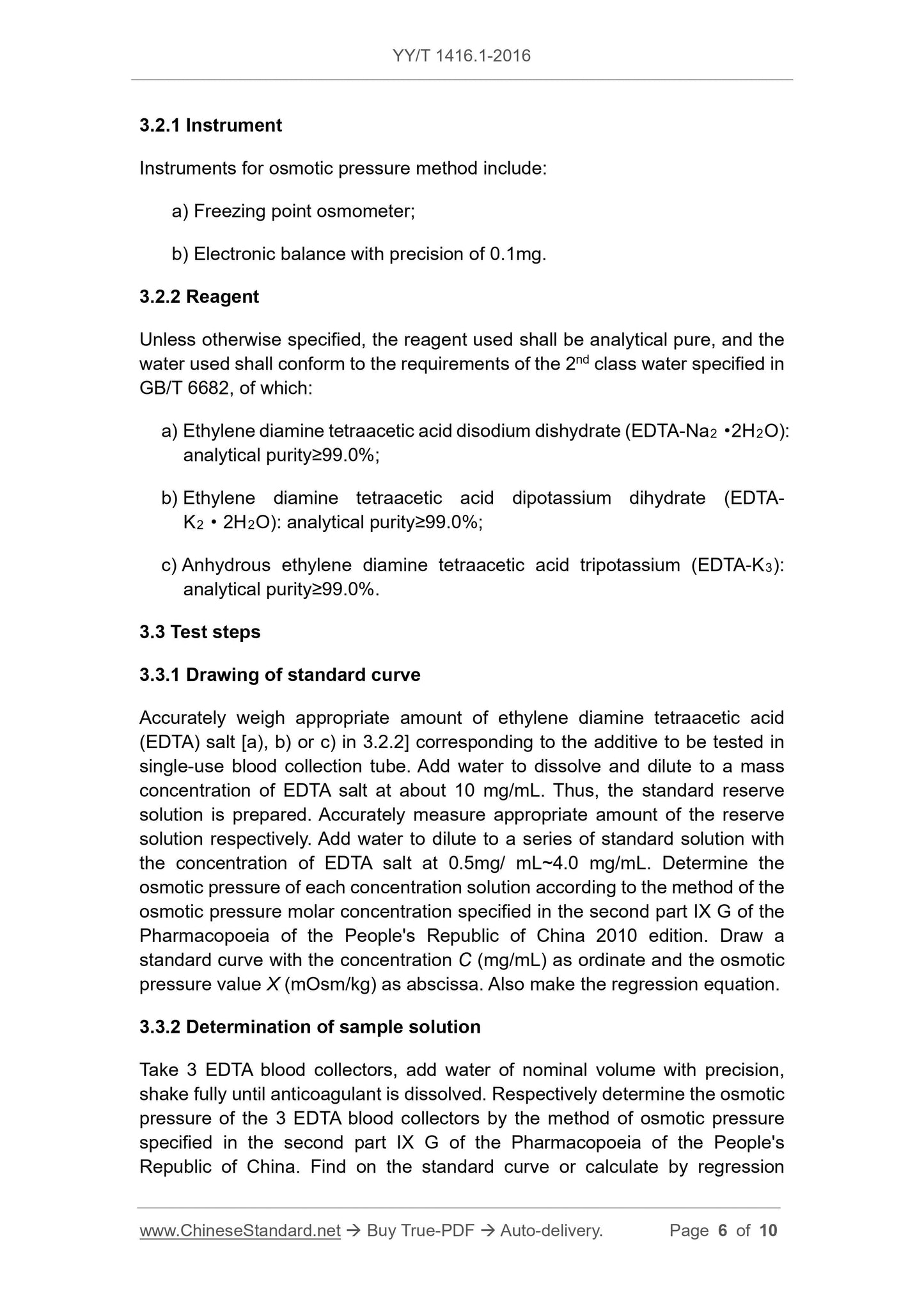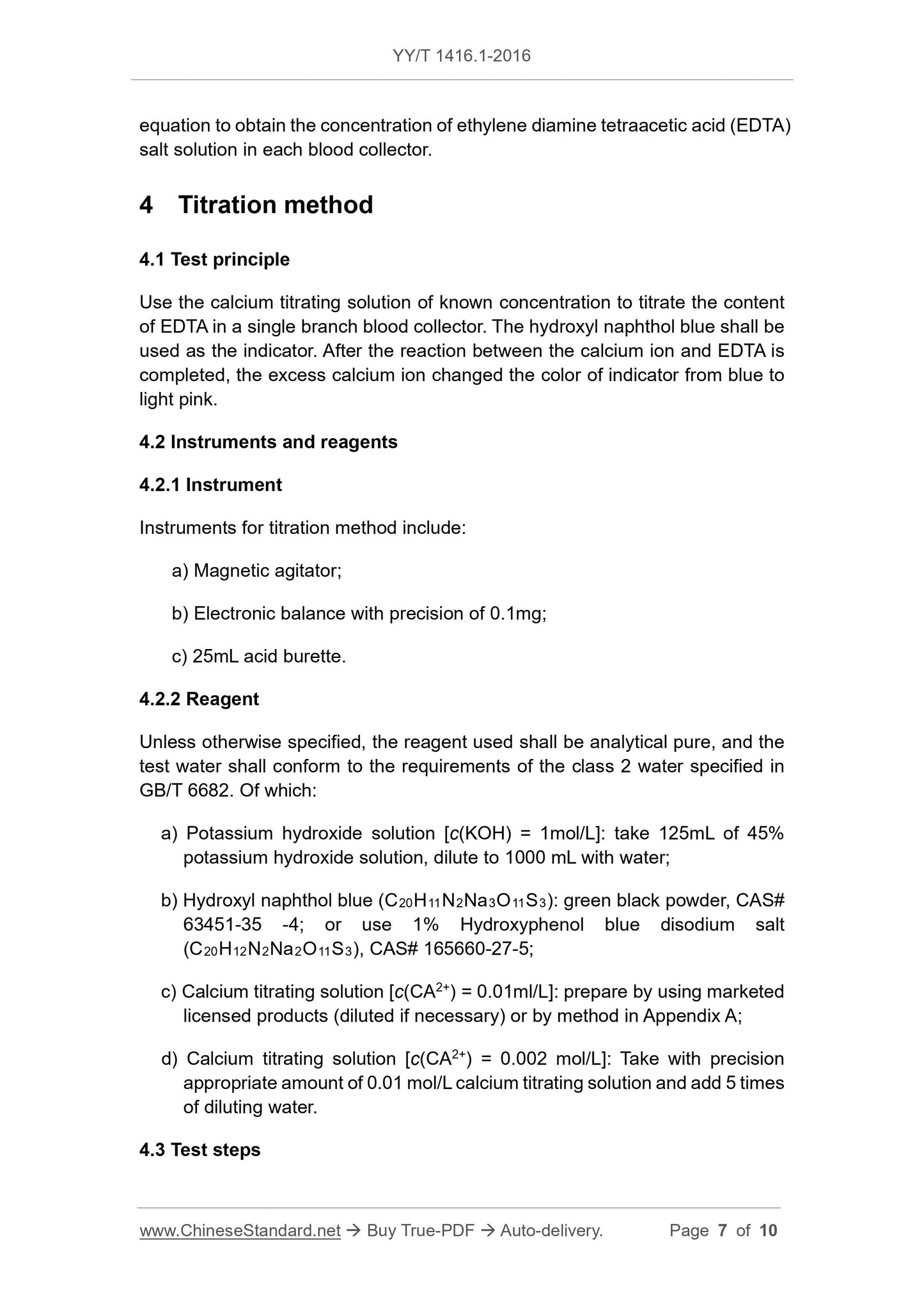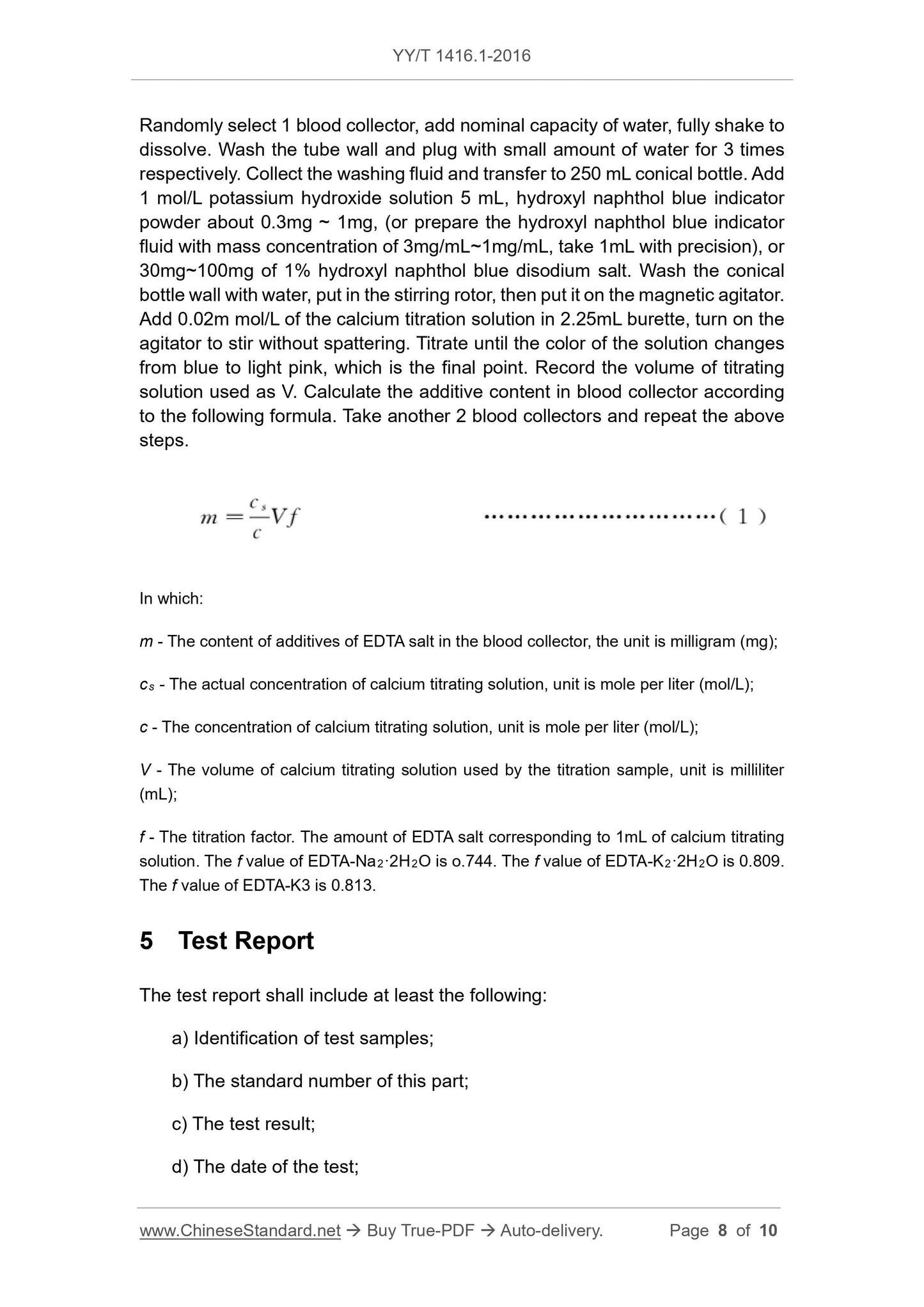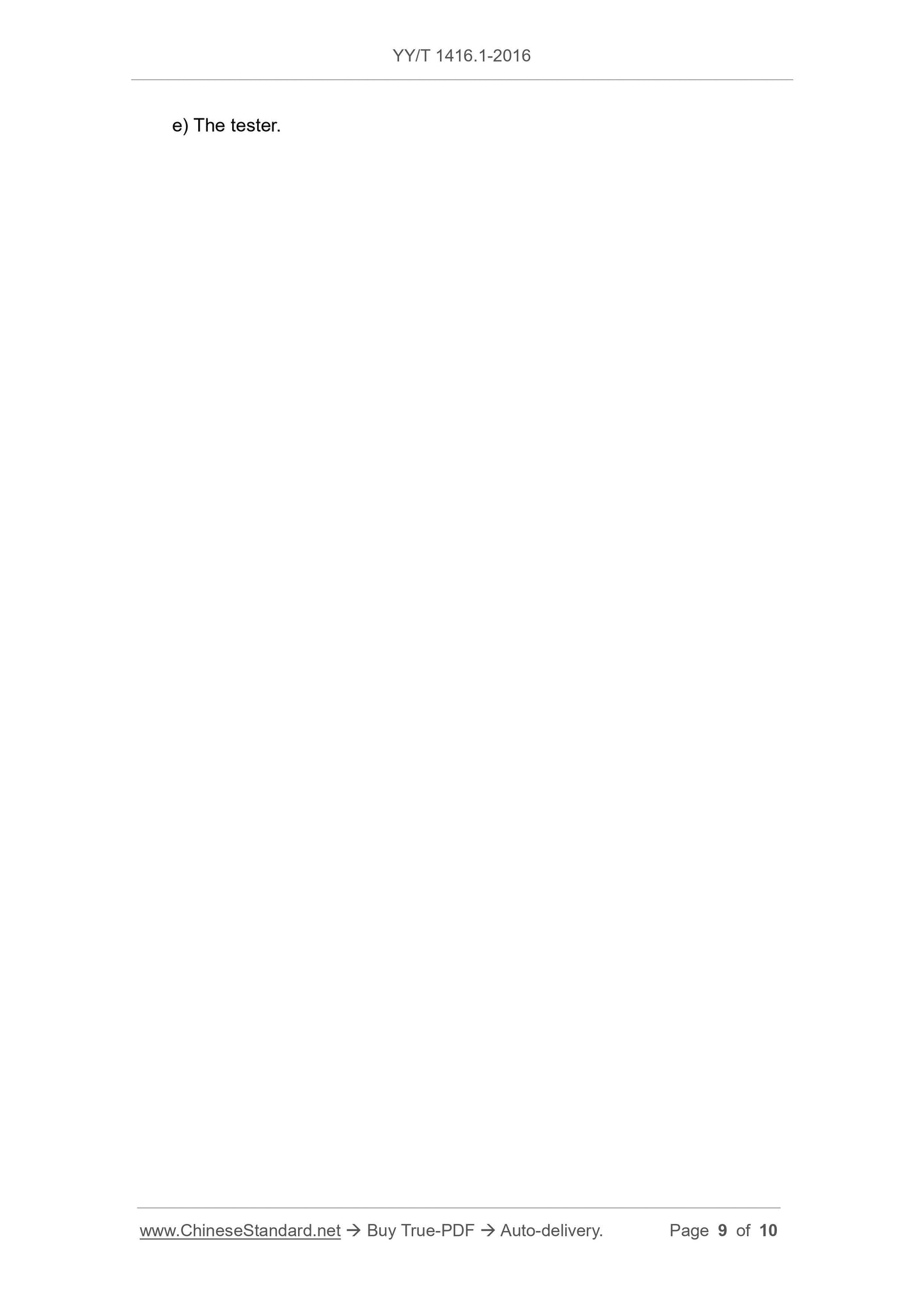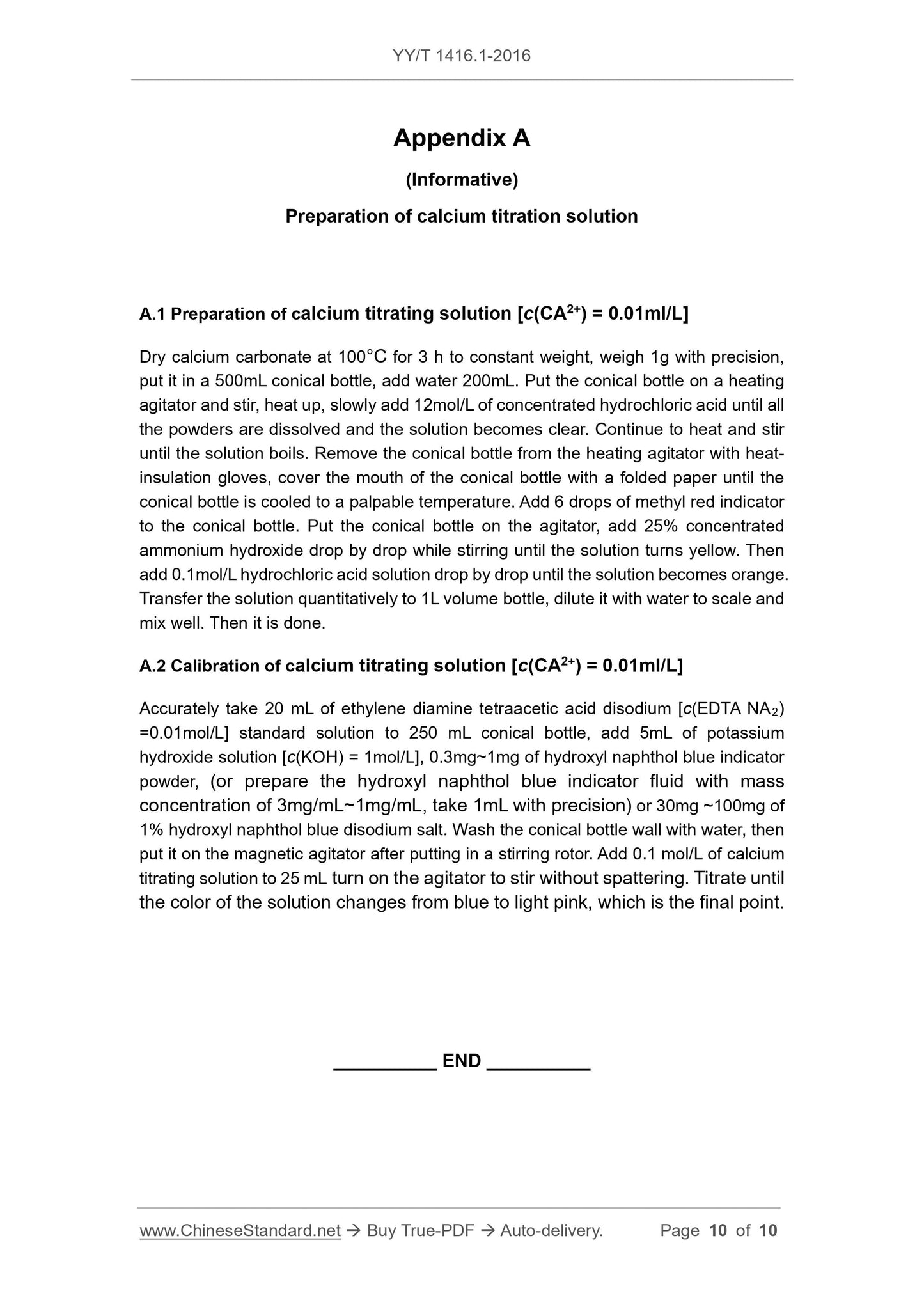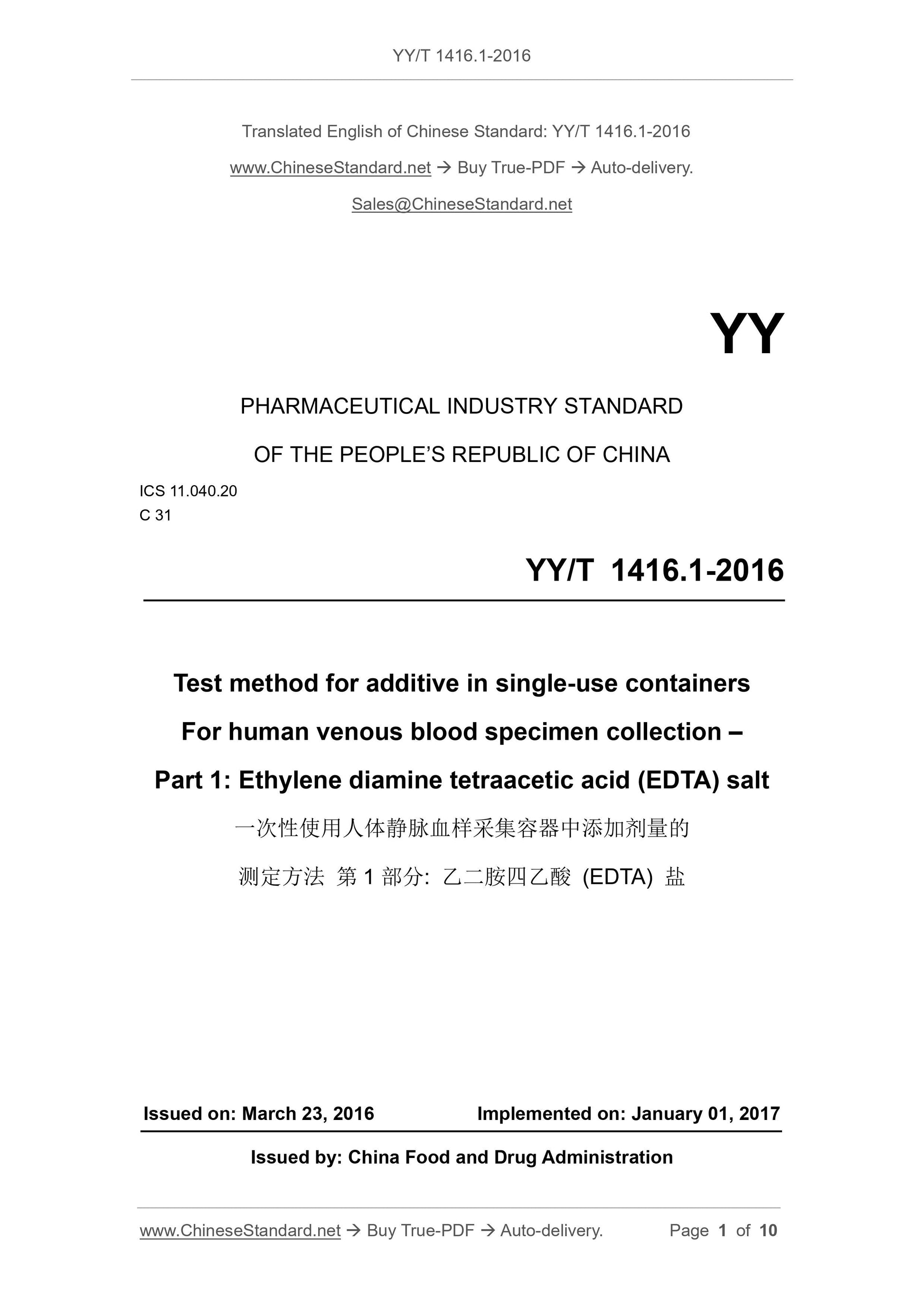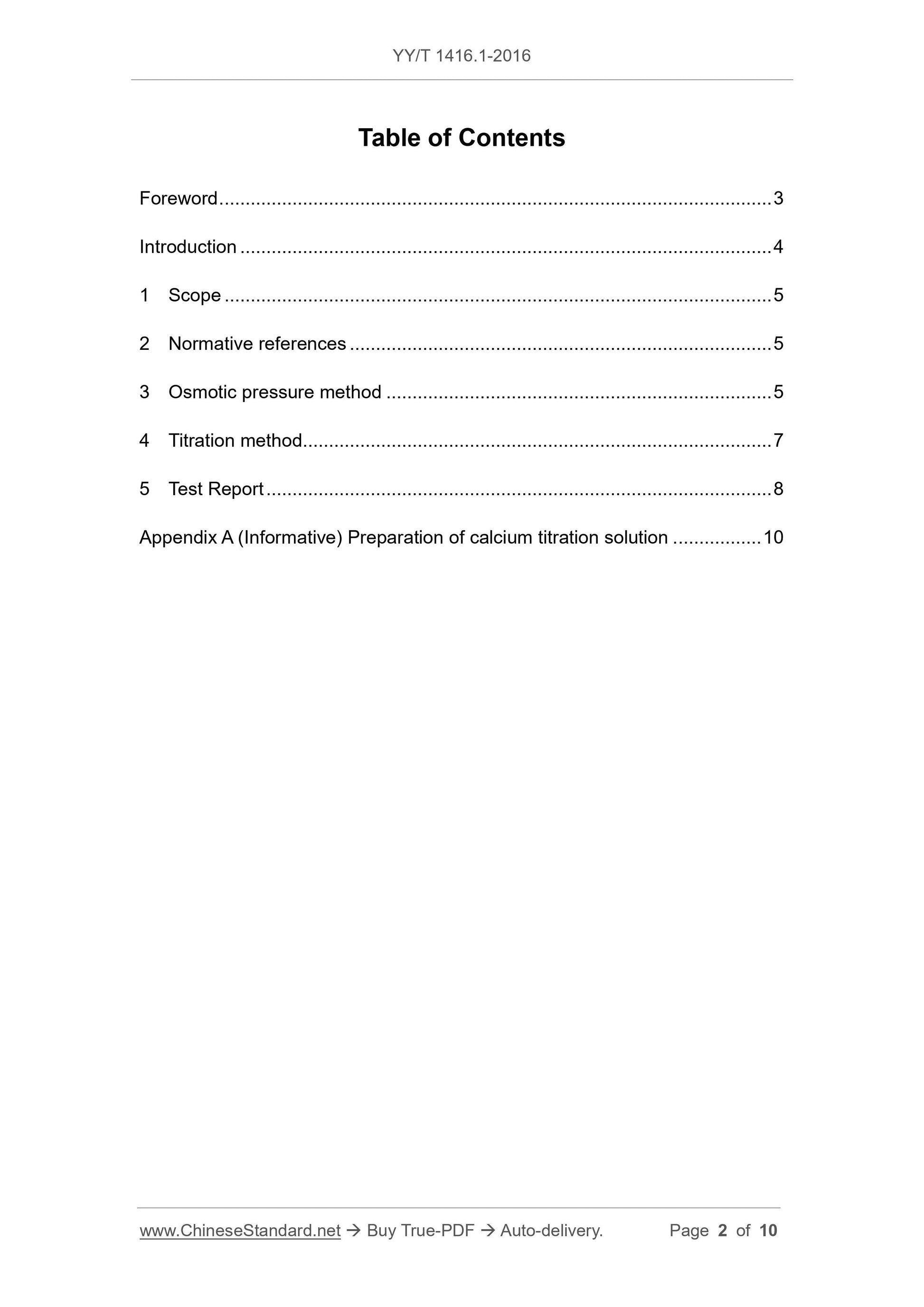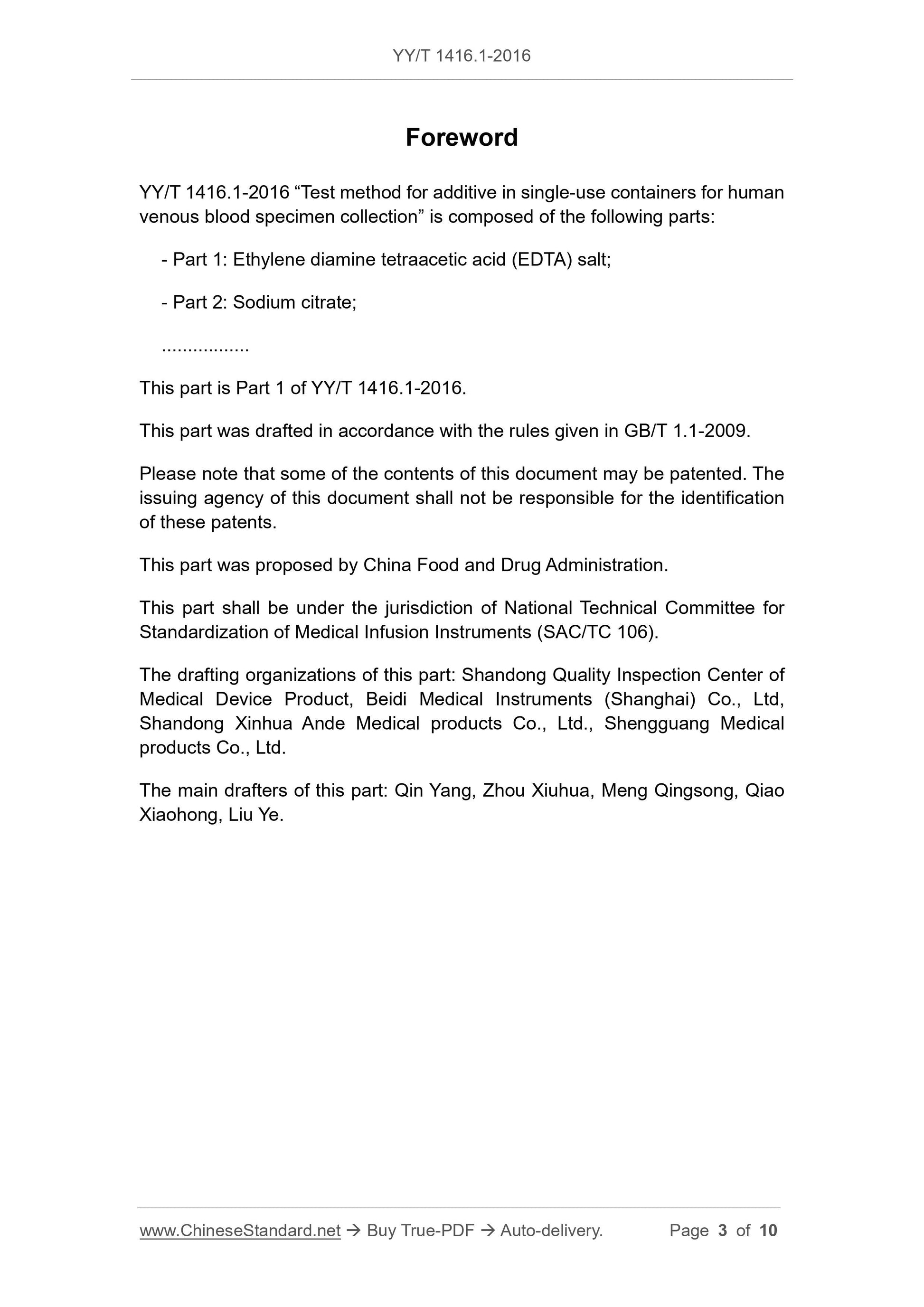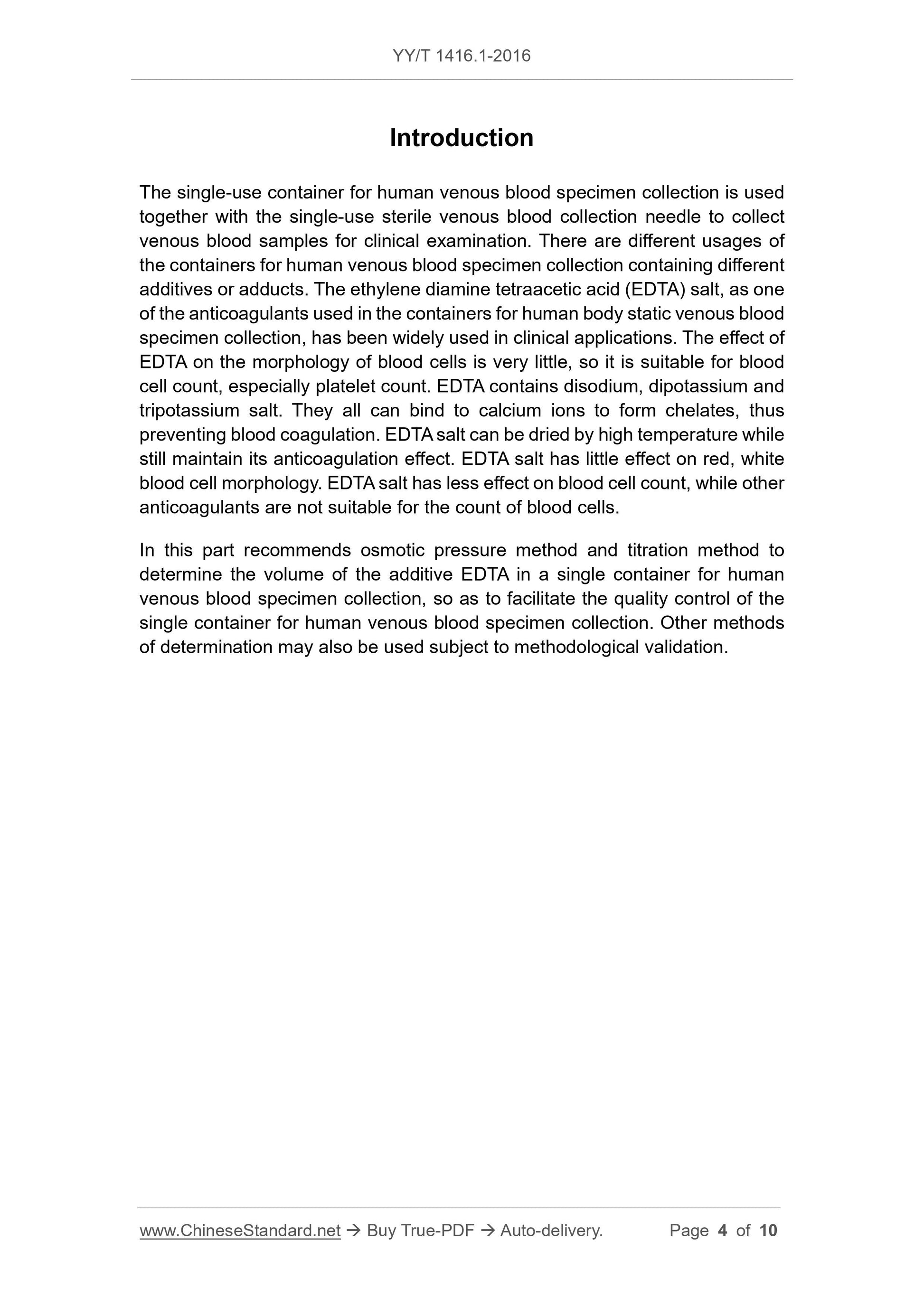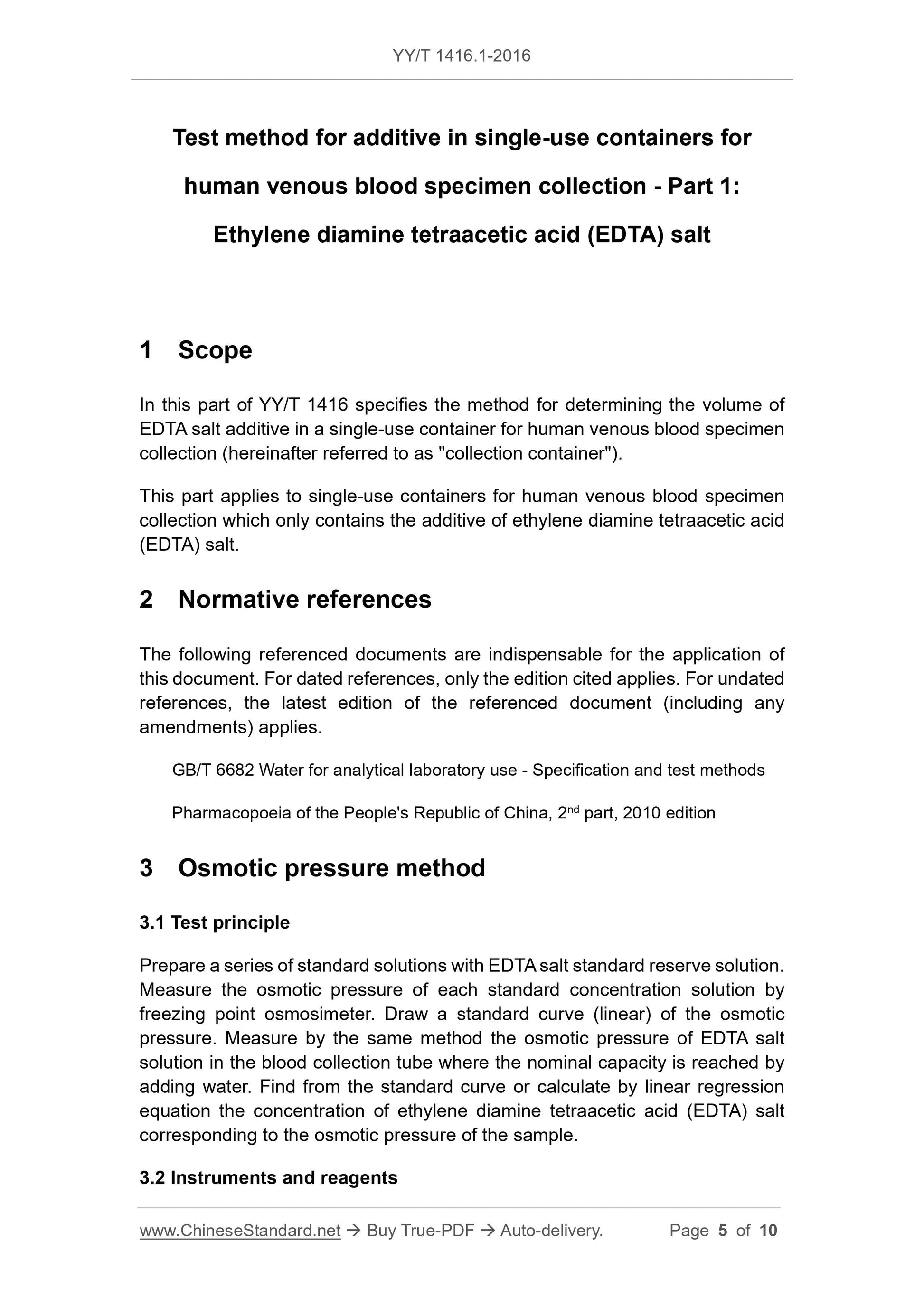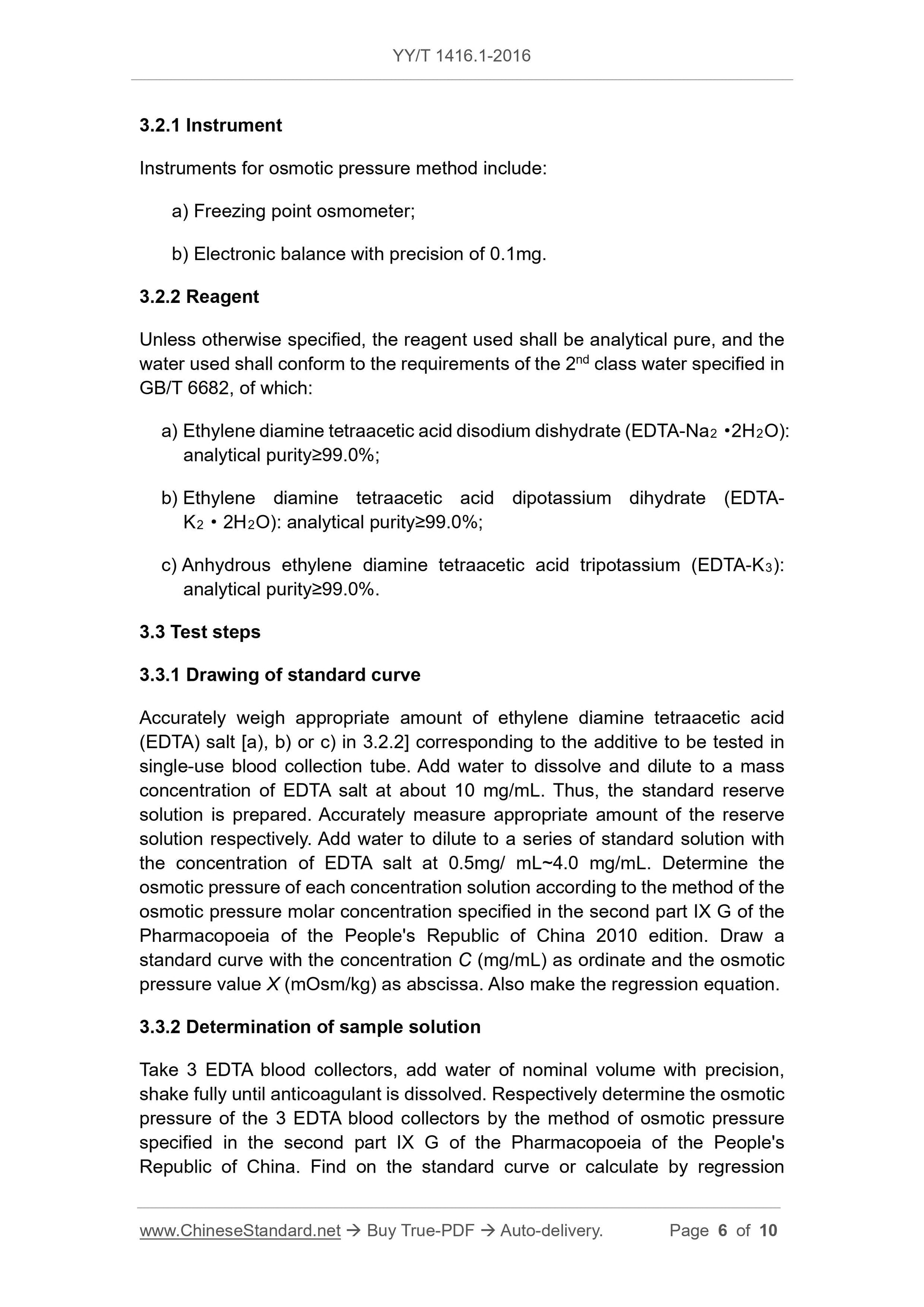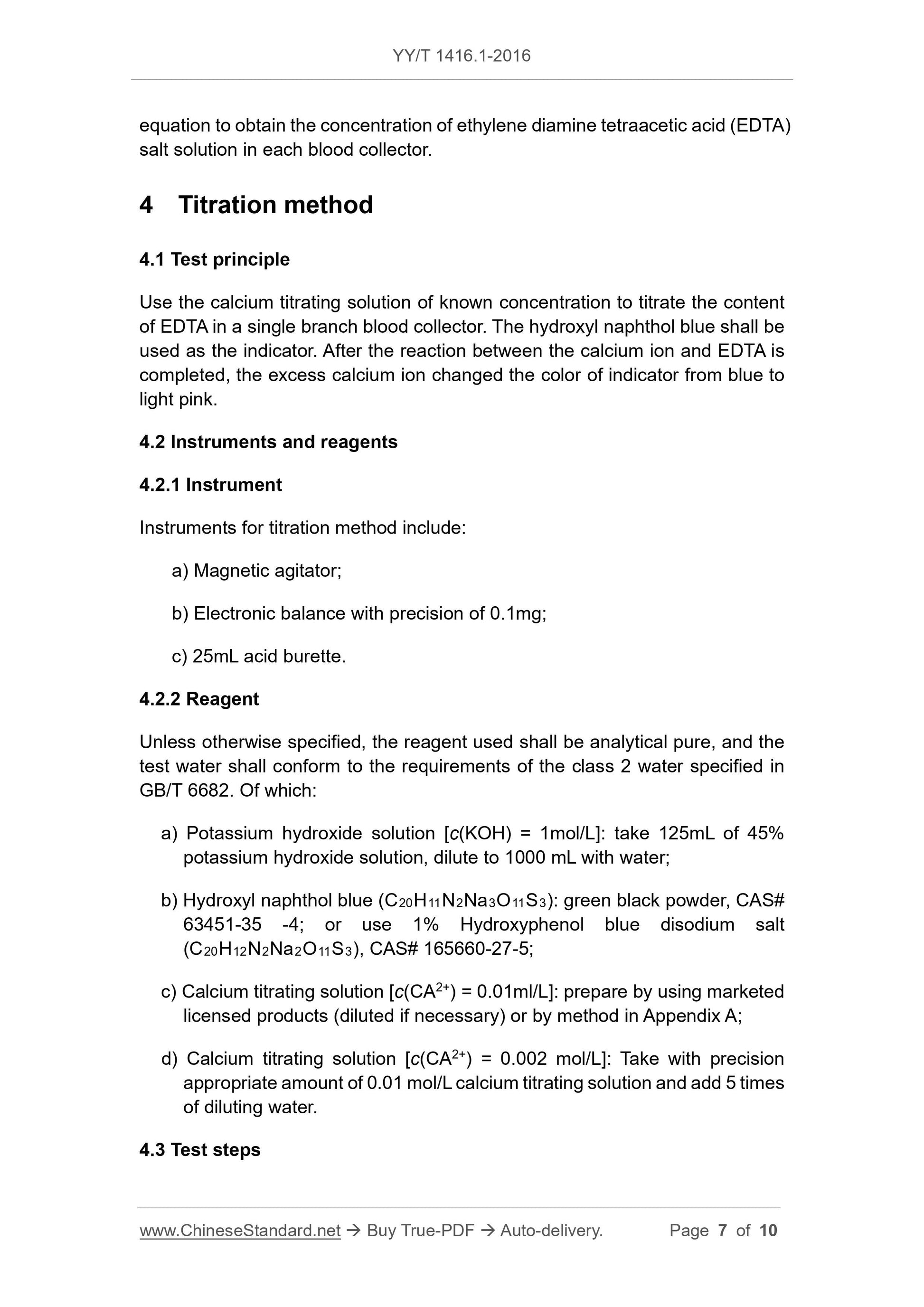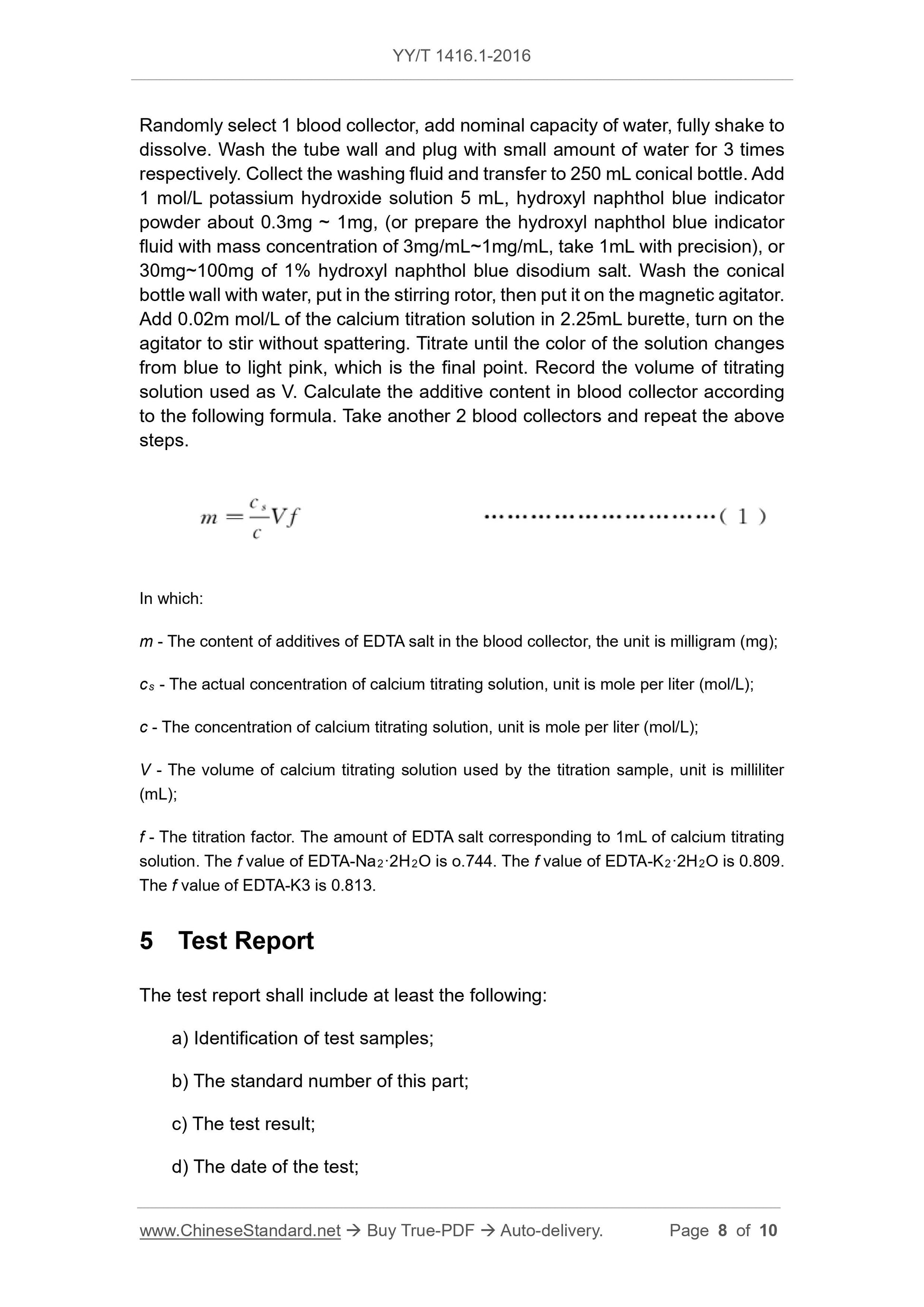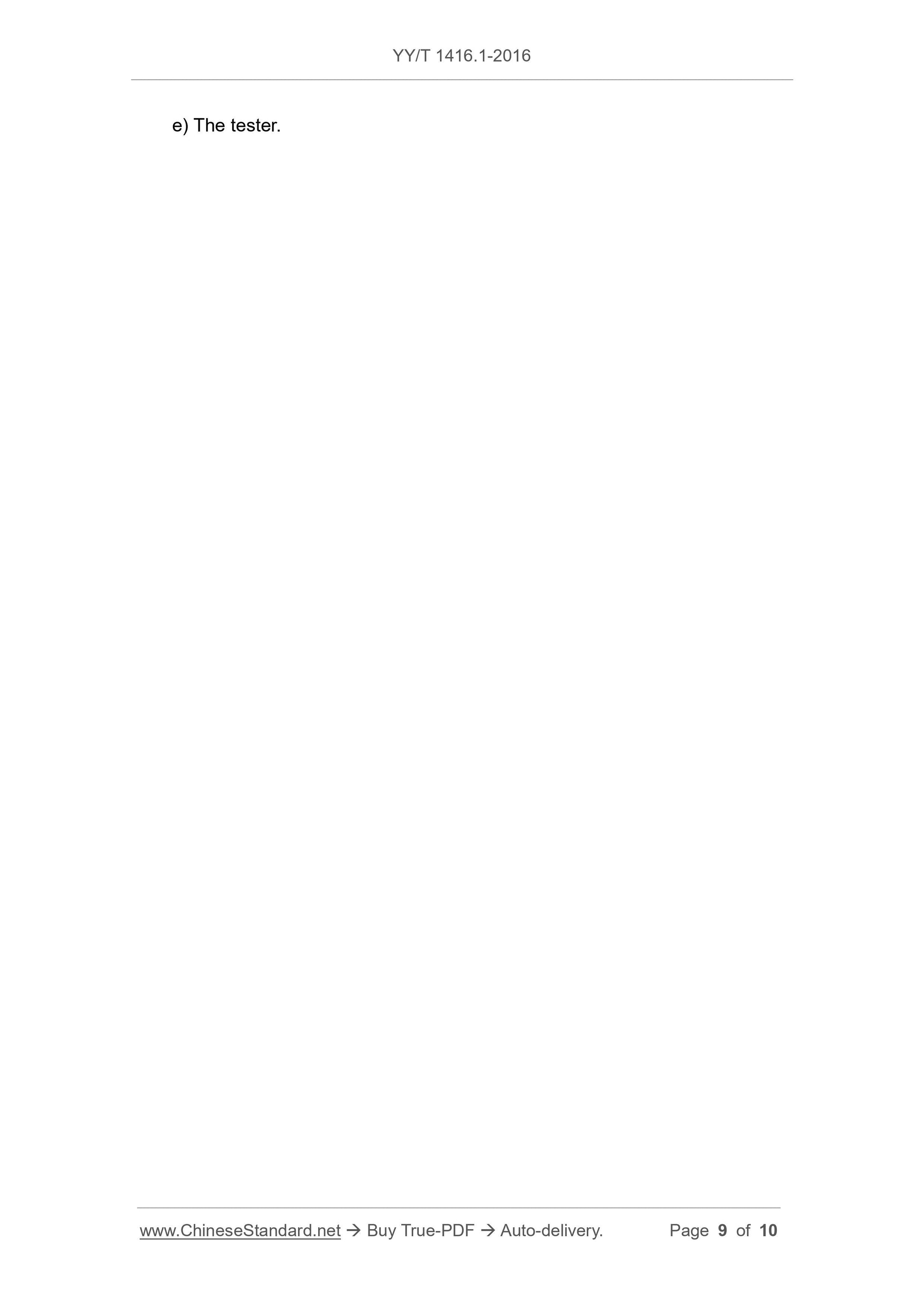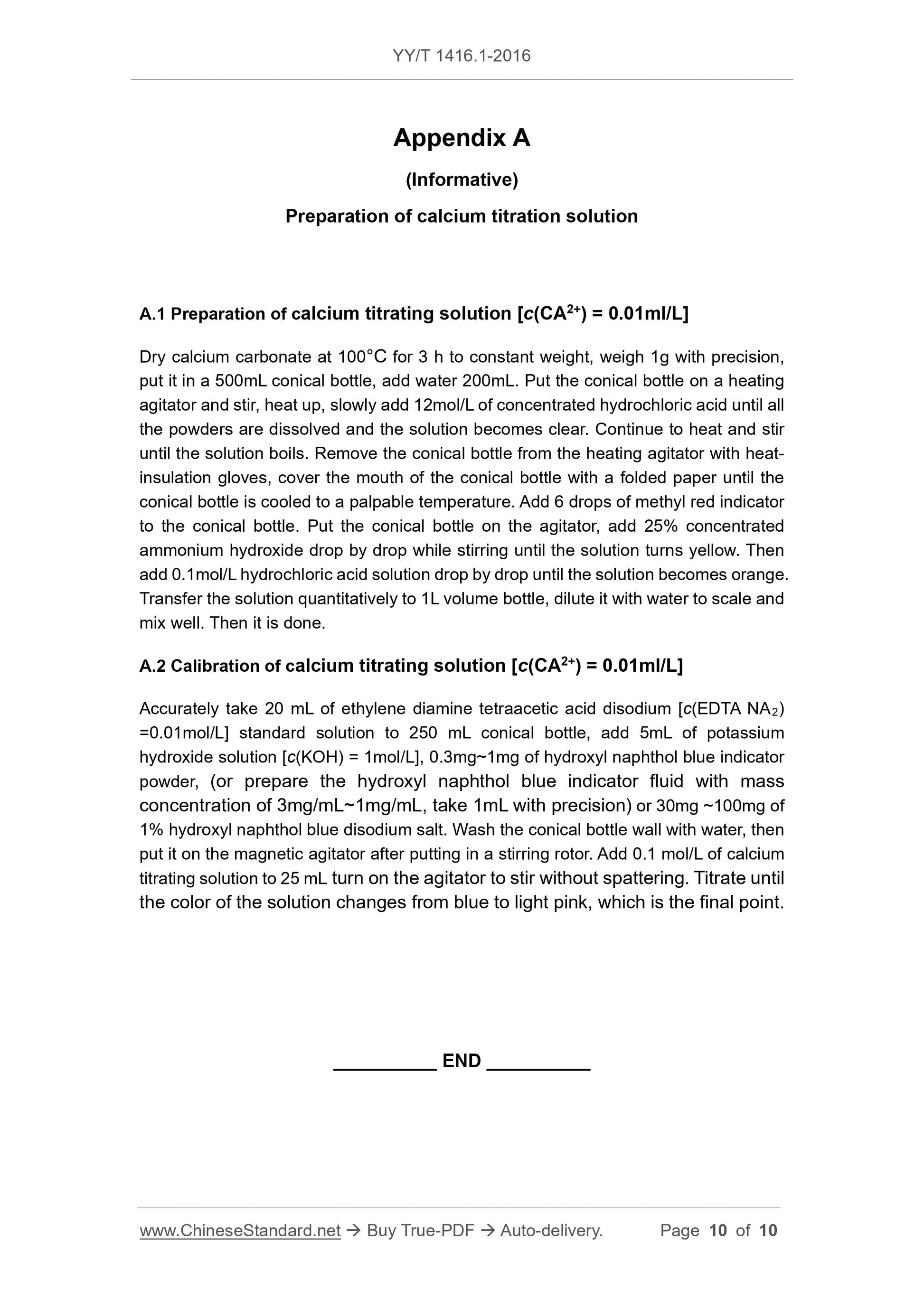1
/
of
10
www.ChineseStandard.us -- Field Test Asia Pte. Ltd.
YY/T 1416.1-2016 English PDF (YY/T1416.1-2016)
YY/T 1416.1-2016 English PDF (YY/T1416.1-2016)
Regular price
$135.00
Regular price
Sale price
$135.00
Unit price
/
per
Shipping calculated at checkout.
Couldn't load pickup availability
YY/T 1416.1-2016: Test method for additive in single-use containers for human venous blood specimen collection. Part 1: Ethylene diamine tetraacetic acid (EDTA) salt
Delivery: 9 seconds. Download (and Email) true-PDF + Invoice.Get Quotation: Click YY/T 1416.1-2016 (Self-service in 1-minute)
Newer / historical versions: YY/T 1416.1-2016
Preview True-PDF
Scope
In this part of YY/T 1416 specifies the method for determining the volume ofEDTA salt additive in a single-use container for human venous blood specimen
collection (hereinafter referred to as "collection container").
This part applies to single-use containers for human venous blood specimen
collection which only contains the additive of ethylene diamine tetraacetic acid
(EDTA) salt.
Basic Data
| Standard ID | YY/T 1416.1-2016 (YY/T1416.1-2016) |
| Description (Translated English) | Test method for additive in single-use containers for human venous blood specimen collection. Part 1: Ethylene diamine tetraacetic acid (EDTA) salt |
| Sector / Industry | Medical Device and Pharmaceutical Industry Standard (Recommended) |
| Classification of Chinese Standard | C31 |
| Classification of International Standard | 11.040.20 |
| Word Count Estimation | 7,714 |
| Date of Issue | 2016-03-23 |
| Date of Implementation | 2017-01-01 |
| Quoted Standard | GB/T 6682 |
| Regulation (derived from) | Notice of the General Administration of Food and Drug Administration (No. 74 of 2016) |
| Issuing agency(ies) | State Food and Drug Administration |
| Summary | This standard specifies the method for the determination of the amount of ethylenediaminetetraacetic acid (EDTA) added in the disposable venous blood collection container (hereinafter referred to as "blood collection tube"). This standard applies to single-use intravenous blood sample collection containers containing only ethylenediaminetetraacetic acid (EDTA) salt additives. |
Share
